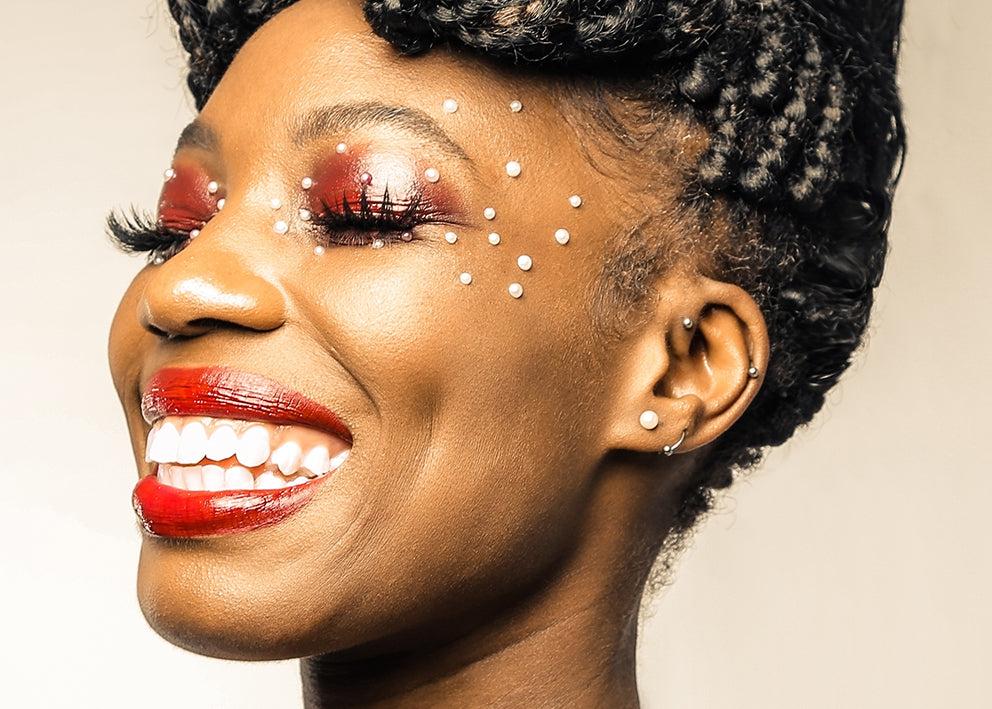10 Popular Types of Ear Piercings
UPDATED: 12/7/2021
There used to be a time when lobe piercings were the most popular ear piercings, with second lobe piercings and helix piercings seeming extreme. About 83% of Americans have ear lobe piercings. However, as body modification continues to make its way into mainstream culture, more and more body piercing placements are becoming popular. Whether you’re an ear piercing newbie or expert, we’ve got a list of the top 10 most popular ones and important information about each.
Earlobe Piercings
It makes sense that earlobe piercings are popular. The lobe of the ear is the fleshiest part without any cartilage or bone, making it one of the least painful of the types of ear piercings. Additionally, they have the shortest healing time of 4 to 8 weeks.

One of the many reasons people get their lobes pierced is because of the wide variety of jewelry options available. However, according to piercing expert Elayne Angel, there is one type that is not recommended for fresh piercings: conventional earrings. Things like cheap costume jewelry or even more expensive traditional style earrings are best to be worn in fully healed lobe piercings. This is because straight posts that stick out behind your ear can dig into your skin when you’re talking on the phone or sleeping on your side. Additionally, the quality of this jewelry is often lesser than that of the jewelry you’d get from a piercing shop or reputable body jewelry website, like ours.
There are even different types of earlobe piercings, including:
- Lobe: This is the type of piercing that you are probably most familiar with. You can get multiple lobe piercings, the exact number depending on your unique anatomy.
- Upper lobe: The upper lobe, or the high lobe piercing, is located at the highest part of your lobe without cartilage.
- Stacked lobe: These types of earlobe piercings have become increasingly popular in curated ear projects and constellation piercings. A stacked lobe piercing involves two piercings—one lobe piercing that’s closer to the edge of the lobe and another piercing placed directly above that one.
Helix & Flat Piercings
Another area of your ear where you can have multiple piercings is your helix. While many people associate the helix as one specific spot on the ear, it’s actually the entire curled outer rim of the ear. Sometimes, the ear’s anatomy is pronounced enough so that the piercing can go through it. However, you have alternative options.
The flat portion of your ear with softer cartilage is called the scapha, commonly referred to as your flat. When the helix isn’t curved enough, this area can be pierced instead.

Healing these types of piercings can take anywhere from 6 to 9 months to fully heal. It’s recommended that you sleep in a donut piercing with your ear through the center hole to help you sleep comfortably while avoiding any trauma to the healing piercing.
Because your helix/flat is composed of cartilage, the pain will be a bit more than the lobe. However, it is nothing unbearable; in fact, these are some of the most popular piercings next to the earlobe.
Forward Helix Piercings
Located at the helix root, or the part of the ear where the helix is adjacent to the head, forward helix piercings are becoming more and more popular. Depending on your anatomy, you might even be able to get multiple forward helix piercings.

While the most common jewelry for this piercing type is a stud, it is possible to wear rings in these piercings.
Daith Piercings
One of the reasons why this piercing became more and more popular is because many people claim that it helps relieve and reduce headaches and migraines. While there’s no exact scientific proof, acupuncturists and holistic medicine practitioners have said that there is a pressure point in the area of the daith piercing. The problem is that with piercing there is no guarantee the piercing will go through the exact pressure point.

The location of this piercing is the piece of cartilage that is just above the entrance to the ear canal. It’s not as difficult to heal because the surrounding ear anatomy helps protect it. This isn’t to say that it takes any less time to heal it though; the typical healing time is within 6 to 9 months.
Tragus Piercings
Do you know that little triangle of cartilage that is near your ear canal? That’s called the tragus. Depending on the size of yours, you may even be able to get multiple tragus piercings or wear larger jewelry.
Because the tragus is composed of thicker cartilage, this piercing does tend to have a higher pain rating. This is because it takes more pressure to get the needle through.

There is a variety of jewelry types you can wear in your piercing: rings, studs, and barbells. Much like other cartilage piercings, the tragus piercing can take anywhere from 6 months to 9 months or longer to heal.
Antitragus Piercings
While popular, this is an anatomy-dependent piercing. Some people have a pierceable area of cartilage directly opposite the tragus. Like the daith piercing, people claim that the antitragus piercing can help relieve and reduce the number of headaches or migraines you get.
It’s recommended that you wear either a curved barbell for the initial jewelry while your piercing heals. Afterward, and depending on your anatomy, you might be able to wear a ring in it.

This piercing is another one that’s up there on the pain scale. This is due to the thick cartilage and the amount of pressure needed to pierce through it. It takes anywhere from 6 months to 9 months, or possibly longer, to heal.
Rook Piercings
Located on the innermost part of an ear’s top flap of cartilage, the rook piercing is another popular type of piercing. It can be placed so that it is vertical or at an angle, with the jewelry framing the center of the cartilage flap or resting closer to your face.
Despite its small, tight space, there’s a wide variety of jewelry types that you can wear in it, such as clickers, curved barbells, captive bead rings, and seamless hoops.

Due to its placement, this piercing is not recommended if you wear a headset or spend a lot of time on the phone.
Although the cartilage is thicker, the rook piercing takes anywhere from 6 to 9 months or longer to heal.
Conch Piercings
Have you ever thought the inner part of your ear looks like a conch shell? Well, you wouldn’t be the first. That very idea is how this piercing got its name.
The conch piercing is located in the deepest part of the bowl-shaped area of the “inner shell” of your ear. Because it’s such a large area of your ear, there are multiple placement options, which include inner and outer conch as well as upper, mid, and lower conch.

One trendy jewelry option is to wear a flatback post with a curved, jeweled end. It really highlights the natural curve of your ear. Rings are also worn in conch piercings.
These piercings also take anywhere from 6 to 9 months or longer to heal.
Snug Piercing
This piercing is for those with really high pain tolerances. Easily considered the most painful type of ear piercing, the snug piercing goes through the thick ridge of cartilage above the antitragus and through an area called the antihelix.
Traditionally, a curved barbell is worn in this piercing. However, a straight barbell can be worn if your anatomy permits it.
Because there aren’t many people with anatomy suited for a snug piercing, piercers started offering the “faux snug,” which mimics the look of a real snug piercing but is really two separate piercings—one through the conch and the other through a very low place on the helix.
Get Jewelry for Your Ear Piercing Today
Regardless of what type of ear piercing you decide upon, be sure to stock up on jewelry. We have a wide selection that includes all types and styles of jewelry for tragus and other cartilage piercings.
Photo cred:Joshua Rondeau, H.F.E, Cat Han, Kimia Zarifi, Anna Elizabeth


